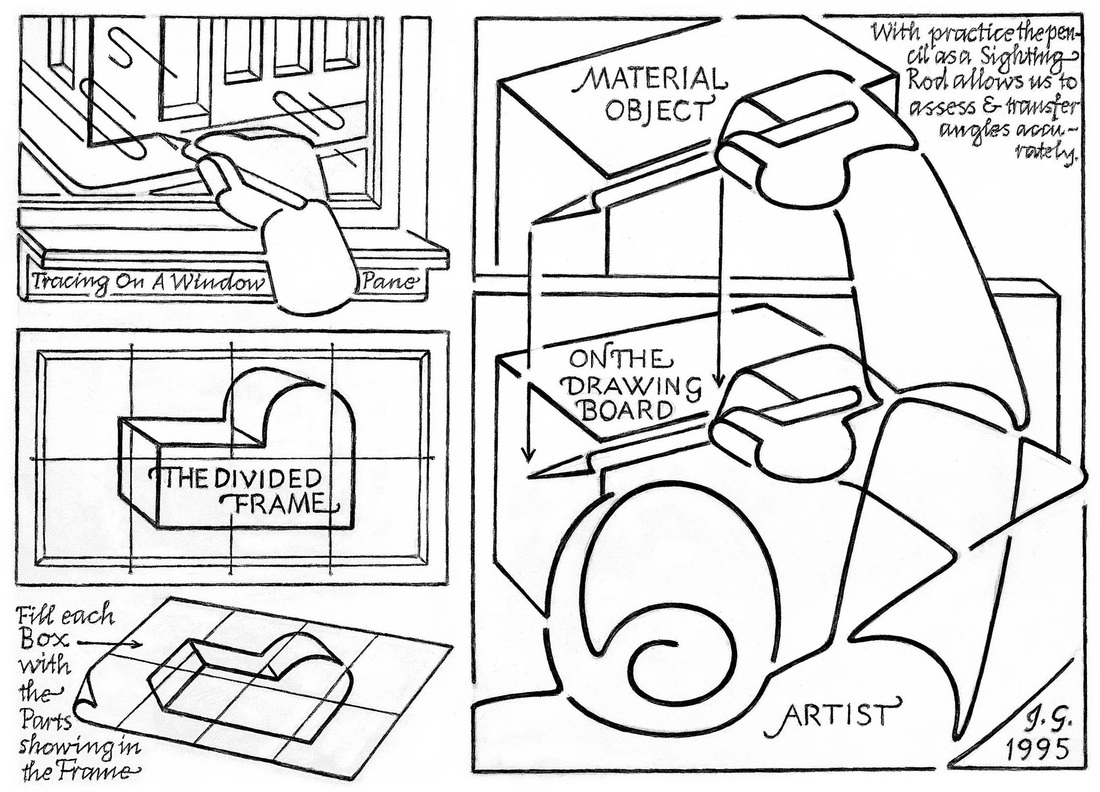|
In the early 1990s this was given first as a speech to a class at the Lancaster County Art Association, and in briefer form afterwards on a couple of other occasions. Some of the illustrations come from the text, others from references to physical works that Johannes brought with him, and one from live demonstration. (4th of eleven sections) E. Practical Knowledge Philosophical reflections may lead the artist to many profitable understandings. Practical knowledge, it is said, leads him directly toward action. But, as insight must inform us what is, and what is not, a worthwhile practice, we must not proceed unphilosophically when we enter into action, in order not to paint ourselves into a corner.
Though we shall look at works far surpassing a beginning education, foundation study will be the perspective from which we pay attention to them. 2. The Parts of Art: To study our English tongue we were taught to parse a sentence into its grammatical elements and the parts of speech. We thus looked precisely at the constituents of language and learned how each one helps to build the whole. The Foundation Program has the very same assignment. It divides the body of the artist’s learning into the parts of Art, in order to resolve with certainty what each part really is and how it therefore can contribute to the entire realm. 3. Descriptive Geometry: Classical art instruction teaches two scientific disciplines, Anatomy and Descriptive Geometry. The latter has longer reach and is hence the more important. Descriptive Geometry is the scientific study of three-dimensionality, and deals with volumes whose surfaces are of three types:
3) (Descriptive Geometry, cont’d)
3 . (Descriptive Geometry, cont'd) Since every basic study prepares the way for more advanced instruction, we should take note – whether or not a given art school offers it – what this advanced work ought to be: In Descriptive Geometry that is the combination of volumes in a study the Intersection of Form, and the scientific study of light, including – beyond light and shade – Mirror Optics and Refraction. 4. Drawing and Observation: This includes learning the use of the pencil as a Sighting Rod for the exact spatial disposition of all objects and their parts. But description at its best is not a copy of the subject in various shades of gray.
Comment:
|
A Blog containing longer text selections from essays by Johannes, on art, philosophy, religion and the humanities, written during the course of a lifetime. Artists are not art historians. People who write are not all learned scholars. This can lead to “repeat originality” on most rare occasions. When we briefly share a pathway of inquiry with others, we sometimes also must share the same results.
Categories
All
Archives |
| von Gumppenberg | Johannes Writes |
|
|








 RSS Feed
RSS Feed